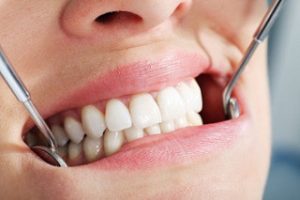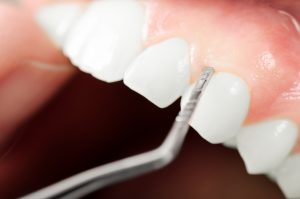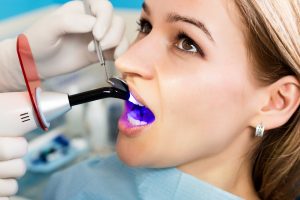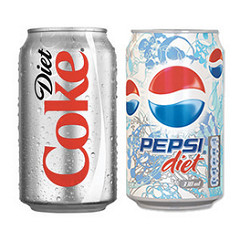ROOT CANAL VS IMPLANT
April 23, 2018
 Many patients and dentists face a decision-making process when it comes to keeping a natural tooth with root canal therapy vs. removal of a tooth and replacing it with a dental implant. The introduction of dental implants has proven to be a pivotal technology in dentistry. In a profession that strives to help patients keep their dentition, the point when it becomes necessary to opt for dental implants is a judgment call.
Many patients and dentists face a decision-making process when it comes to keeping a natural tooth with root canal therapy vs. removal of a tooth and replacing it with a dental implant. The introduction of dental implants has proven to be a pivotal technology in dentistry. In a profession that strives to help patients keep their dentition, the point when it becomes necessary to opt for dental implants is a judgment call.
So, is one treatment better than another? There have been many scientific papers written on this subject. In one more recent study published in the Journal of Dental Research, the authors noted, “Both options should be seen as complementing each other, not as competing, and should serve the overall goal in dentistry, the long-term health and benefit of the patient, being least invasive and incorporating function, comfort, and esthetics. A tendency exists toward a simplified approach of ‘extraction and implant,’ but this is not always simple or ethical.”
In comparing many of the research studies, there seems to be a difference in what the implant studies define as their “survival” rate vs. “success” rate. Many dentists will tell patients that the survival rate for dental implants is in the 95% range but when looking at the research, the success rates of these same implants falls into the low to mid 70% range. Meanwhile, there are strict guidelines for root canal (endodontic) success.
In another study the authors compared the prognosis for implants and root canal treated teeth, and noted that “natural teeth exceed the life expectancy of implants at 10-year observation points, including root canal treated or periodontally compromised teeth.” Note: Periodontally compromised teeth are those with at least moderate bone loss.
In yet another study that compared root canal treated teeth with single-unit implants, researchers observed a positive outcome in 74% of the implants and 84% of the root canal treated teeth after seven to nine years. They also found significantly higher rates of complications and necessary interventions in the implant group, and patients needed more time to adjust to implant restorations.
Treatment outcomes differ significantly, depending on the experience of the clinician, and it is more significant in implants than in endodontic treatment. In one study, implant specialists achieved a 96% survival rate, while inexperienced practitioners only had a survival rate of 73%. Meanwhile, researchers observed less of a difference when it came to clinician type and endodontic treatment in a multicenter study with 350 teeth meeting the inclusion criteria: General practitioners had a 90% survival rate, while root canal specialists had a 98% rate.
Now that you are thoroughly confused, how do you make a decision when posed with the question to keep a natural tooth with root canal therapy vs. a dental implant? There are many factors to consider and each situation is unique. It is important to discuss the pros and cons with your dentist.
While dental implant treatment is absolutely the treatment of choice for many situations, keep in mind that many of the studies comparing the two treatment options suggest that “too many teeth are extracted in favor of dental implants”.
Your Dentist Reveals the Top Foods to Improve Gum Health
April 19, 2018
 It’s common, when thinking of oral care, to direct your attention to your teeth, but your gums are just as significant. That’s because they supply the blood and nutrients that are vital to sustaining the health of your teeth. Thus, your Rowley dentist wants you to know about some simple foods you can eat that will make a big impact on your soft tissues. Continue reading to learn what they are.
It’s common, when thinking of oral care, to direct your attention to your teeth, but your gums are just as significant. That’s because they supply the blood and nutrients that are vital to sustaining the health of your teeth. Thus, your Rowley dentist wants you to know about some simple foods you can eat that will make a big impact on your soft tissues. Continue reading to learn what they are.
ARE YOU AT RISK?
April 17, 2018
 Last week I introduced you to a patient who has been struggling with dental decay (cavities), gum recession, and dental erosion (the chemical breakdown of tooth structure). I discussed how these dental problems are complex multifactorial diseases of epidemic levels affecting both children and adults.
Last week I introduced you to a patient who has been struggling with dental decay (cavities), gum recession, and dental erosion (the chemical breakdown of tooth structure). I discussed how these dental problems are complex multifactorial diseases of epidemic levels affecting both children and adults.
I ended with the idea that a healthy mouth requires more than brushing, flossing, and “fillings”. With current scientific evidence and new technologies, patients and practitioners need to begin to look at these problems not just from a drilling and filling approach, but also from a medical (preventive/therapeutic) approach. If “we” continue to think the same way about dental issues, we will continue to have the same struggles and same results.
There are over 19,000 different bacteria that have been found in mouths and every person has about 1,000 different types. Not all of them cause decay, but many of them have also been found to grow on artery walls. The medical/dental systemic connection is real and we must pay more attention to it.
Dental decay is on the rise. Why the increase? Most of it has to do with dietary trends. We snack more, eat more sugar/carbs, drink more soda, have more gastric reflux, take more mouth-drying medications, etc. Dental caries (decay) is a pH specific disease. The right bacteria, plus sugar, create acid which breaks down the enamel of the teeth. Add an already acidic environment and it is even worse. In most cases it is a preventable disease. The problem is that changing our thinking and behavior, the nemesis of all that is bad, is difficult to do unless there is an awakening among us.
It is time for the dental professional to take a different approach when treating this disease. More focus needs to be shifted to prevention of decay rather just treating it. Filling teeth is treating the result of the disease but does nothing to prevent it. The dentist needs to take a more active role in assessing individual’s risk factors. In the dental world one way to do this is to use CAMBRA, which stands for Caries Management By Risk Assessment.
Based on assessing an individual’s risk factors such as quality of home care, quality of salivary flow, medication and dietary issues, a caries-preventive strategy can be established. Dentists must take some responsibility and be open to a different management of this disease. They must also be able to motivate people to change habits. The bottom line is that if you want to be decay-free, you can be.
For those at high risk, specific behavioral modifications are almost always necessary. To become aware of these often requires an assessment by your doctor. Doctors need to shift time away from treating things to be able to assess more and discuss the specific behavior modifications necessary for each individual patient. The patient needs to be receptive to hear and act on these changes.
There are also some great products currently available and others on the horizon. Everything from new toothpastes and gels with ions in them to rebuild tooth structure, sprays to neutralize pH, and probiotics are on their way. Right now you can use things like the sweetener replacement Xylitol, which by itself is cavity-fighting, but also works synergistically with fluoride. Prescription level toothpastes are also available and there is strong research for the topical application of fluoride varnish, the same stuff the kids get, for adults.
The evidence is very clear – this is a preventable disease. Next time you go to the dentist and find out you have a new cavity, stop blaming the dentist or yourself, and ask to get a specific protocol for prevention of this disease based on your specific risk factors.
Dr. St. Clair maintains a private dental practice in Rowley and Newburyport dedicated to health-centered family dentistry. If there are certain topics you would like to see written about or questions you have please email them to him at jpstclair@stclairdmd.com. You can view all previously written columns at www.jpeterstclairdentistry.com/blog.
THE COMMON DENOMINATOR
April 9, 2018
 Changing our behavior, habits, attitude, or any aspect of our lives can be a difficult thing to do. I am not writing as an expert on this subject as I have the same struggles as everyone else with change. However, repeated awareness of changes we want to make is one strategy to move us closer to making that change.
Changing our behavior, habits, attitude, or any aspect of our lives can be a difficult thing to do. I am not writing as an expert on this subject as I have the same struggles as everyone else with change. However, repeated awareness of changes we want to make is one strategy to move us closer to making that change.
A good example is Mary, a patient of mine. Mary is an adult who has had issues with decay (bacterial disease that breaks down tooth structure), dental erosion (chemical breakdown of tooth structure), and gum recession (loss of the supporting structures of the teeth). When people like Mary present with these problems, we dentists present treatment to “fix” the problems. However, the reasons “WHY” these issues are occurring are just as important, if not more so, than the “fixes” we propose.
Mary drinks diet soda. In fact, Mary doesn’t just drink diet soda; she has a diet soda by her side all day long. At a recent event I saw Mary sitting and listening intently to the presentation. At her side was her diet soda. Every few minutes Mary would unscrew the diet soda cap and take a swig.
The three main dental issues Mary has: decay, erosion, and recession, have many different etiologies. One common denominator is pH, which is a scale used to describe the acidity or alkalinity of solutions or environments. The lower the pH the more acidic the solution or environment is. In order for any of the three disease processes described above to occur, the pH of the oral environment has to be acidic.
While there are many reasons the pH of the oral environment can be acidic, such as medications or disease, dietary factors play a significant role. A pH lower than 5.5 in the oral cavity puts you at risk for dental disease. Most tap water, for example, has a pH of 7. The average diet soda has a pH of 3.28. Stomach acid has a pH between 1-2. Diet soda is very acidic.
Having a diet soda with a meal on occasion is most likely not a problem. Typically, after consumption of an acidic beverage, your saliva will neutralize (make your mouth more alkaline and less acidic) within about a half hour. That is why you may have heard that you should wait at least a half hour before brushing your teeth after meals. The problem with Mary sipping the diet coke all day long is that the pH of her mouth is always acidic. This creates a very dangerous environment.
Quieter drills, new materials and technologies will not solve these problems. While etiologies such as medications that can cause dry mouth and a very acidic environment are difficult enough to manage, behavioral issues are often not discussed in enough detail, or at all, because they can be more difficult to manage.
Avoidable dental problems are the last thing a patient wants to hear about and a dentist wants to see. In addition, we as providers need to adopt a more preventive approach to the conditions I discussed in this column. Next week I will introduce you to one way I am currently studying.
OROFACIAL PAIN
April 2, 2018
 Orofacial pain includes a number of clinical problems involving the chewing (masticatory) muscles or temporomandibular joint (TMJ). Problems can include TMJ discomfort, muscle spasms in the head, neck or jaw, migraines, cluster or frequent headaches, pain with the teeth, face or jaw, anxiety and depression.
Orofacial pain includes a number of clinical problems involving the chewing (masticatory) muscles or temporomandibular joint (TMJ). Problems can include TMJ discomfort, muscle spasms in the head, neck or jaw, migraines, cluster or frequent headaches, pain with the teeth, face or jaw, anxiety and depression.
You swallow approximately 2,000 times per day, which causes the upper and lower teeth to come together and push against the skull. People who have an unstable bite, missing teeth, or poorly aligned teeth can have trouble because the muscles work harder to bring the teeth together, causing strain. People with seemingly good teeth/bite are also susceptible. Pain can also be caused by clenching or grinding teeth, trauma to the head and neck, or poor ergonomics.
Temporomandibular disorders (TMD) affect more than 10 million Americans. Your TMJ’s are located where the skull connects your lower jaw to the muscles on the sides of your head and face. They control the joint’s movements. Women between the ages of 20 and 40 are the most frequent sufferers because of the added estrogen in their bodies. Estrogen impacts the body’s natural pain fighters (endorphins), increases inflammation in the temporomandibular joints, and compromises the strength and adaptive ability of all ligaments
One in eight Americans suffer from headaches. Experts estimate that 80 percent of all headaches are caused by muscle tension, which may be related to the bite. Clenching the jaw muscles creates tension in the muscles that close the jaw, the main one of which is the temporalis muscle. Signs that may indicate a headache from dental origin include: pain behind the eyes, sore jaw muscles or “tired” muscles upon awaking, teeth grinding, clicking or popping of the jaw joints, head and/or scalp is painful to the touch, earaches or ringing, neck and/or shoulder pain, and dizziness.
Sleep disorders can also play a role. If you have gone through treatment and still experience orofacial pain, you may have a sleep disorder, such as bruxism (grinding), or a sleep-related breathing disorder, such as snoring or sleep apnea.
Your dentist has a variety of treatments that can help relieve your orofacial symptoms. One device is called an orthotic, or splint, that is worn over the teeth to help stabilize the bite. Permanent correction may require equilibration (reshaping teeth), building crowns, or orthodontics. Many use a splint on a daily basis to avoid having these other treatments done.
Other things that can help alleviate pain are using ice on the painful area, eating a softer diet and avoiding chewing gum or ice, being conscious to keep teeth slightly apart except when chewing and swallowing, sleeping on your back and not resting your hand on your chin.
Orofacial pain can range from tolerable to debilitating. Maintaining or correcting your bite ensures optimal health, and proper care will help reduce or eliminate orofacial pain or discomfort. If your dentist can not help you, ask for a referral to a specialist.
Dr. St. Clair maintains a private dental practice in Rowley and Newburyport dedicated to health-centered family dentistry. If there are certain topics you would like to see written about or questions you have please email them to him at jpstclair@stclairdmd.com. You can view all previously written columns at www.jpeterstclairdentistry.com/blog







